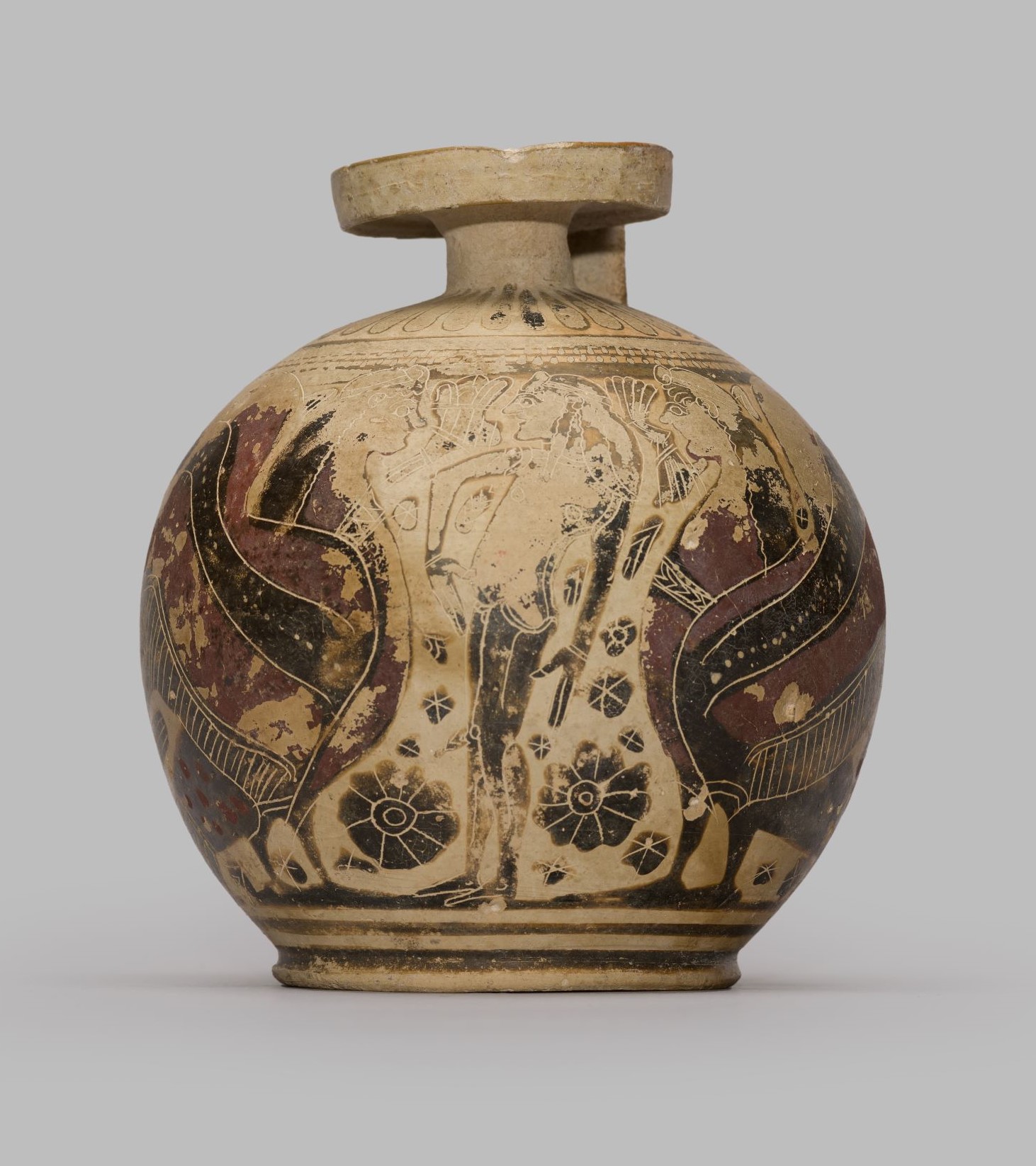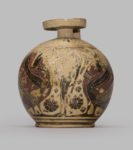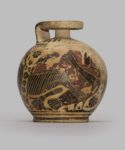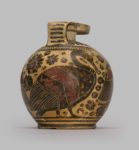
Aryballos [Gr44]
Middle Corinthian, by the Otterlo Painter, 570-550 BC
Painted terracotta (h. 16 cm, d. 14 cm)
A dancer stands between two sirens, his long hair bound in a tainia and wearing a short chiton. On the reverse, a swan below the handle.
Sirens often feature on Corinthian vases from the Orientalising period (7th-6th centuries BC). These dangerous creatures, with a woman’s head and the body of a bird, lived on rocky islands and their singing lured sailors to their deaths (as described in Book 12 of Homer’s Odyssey). Like sphinxes and griffins, the image of the siren was introduced to Greek art from the Near East around 700 BC.
The figure of a male dancer, usually wearing a distinctive padded costume, appears on Corinthian vases with some regularity. More than three hundred examples have been identified, all painted between c. 630 BC and c. 570 BC. The significance of the figure (usually referred to as a ‘padded dancer’ or ‘komast’) has been the subject of some debate. It has often been linked to the worship of Dionysus and the early theatre.
Parts of this vase are heavily worn, but the design is still visible where details were incised through the paint to the clay beneath. This technique was developed in Corinth early in the 7th century, and was probably inspired by the engraved decoration of Near Eastern metalwork.
Literature: R. Foster, Winchester College Treasury: a guide to the collections (Winchester, 2016), pp. 44-45; J. Falconer and T. Mannack, Corpus Vasorum Antiquorum: Great Britain, Fascicule 19: Winchester College (Oxford, 2002), p. 14, plate 10.16-18; A. Amyx, Corinthian vase-painting of the Archaic Period (Berkeley, 1988), p. 178.18; A. Seeberg, Corinthian Komos Vases, Bulletin of the Institute for Classical Studies, Supplement 27 (London, 1971), p. 18, plate 4a-c, no. 30; J.L. Benson, ‘A Floral Master of the Chimaera Group: the Otterlo Painter’, Antike Kunst, vol. 14:1 (1971), pp. 15, 19, plate 1.9, figs. 2-3; H.A. Payne, Necrocorinthia, a study of Corinthian art in the Archaic period (Oxford, 1931), p. 305, no. 838; Winchester College Memorial Buildings: Department of Classical Art (Winchester, 1909), p. 14 (no. 17)
Exhibited: Winchester Discovery Centre, July-August 2012
Provenance: From Corinth, at Winchester College by 1909
Location: Treasury, Gallery 3


